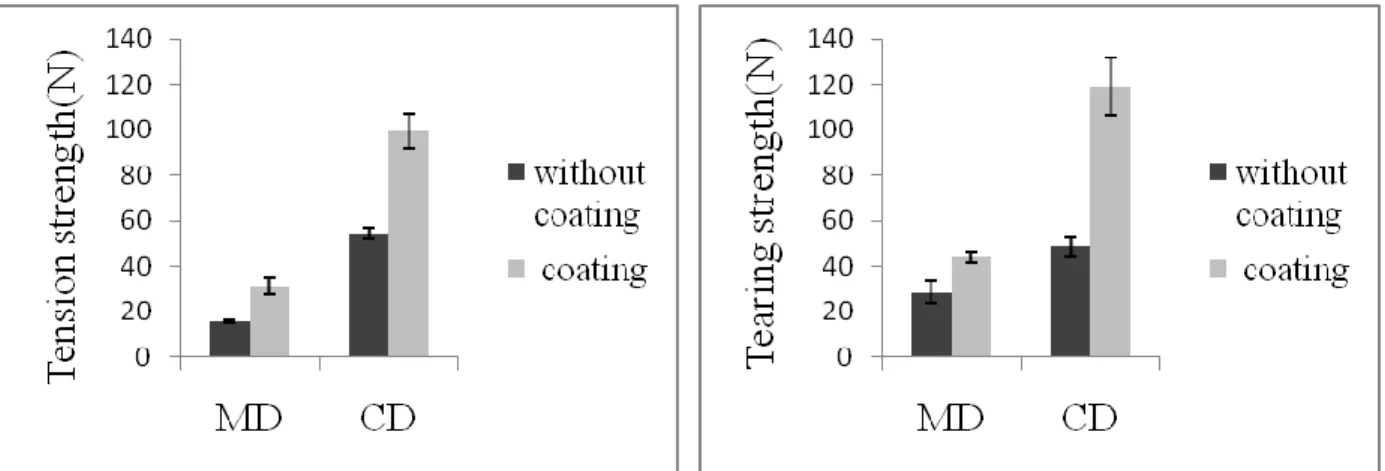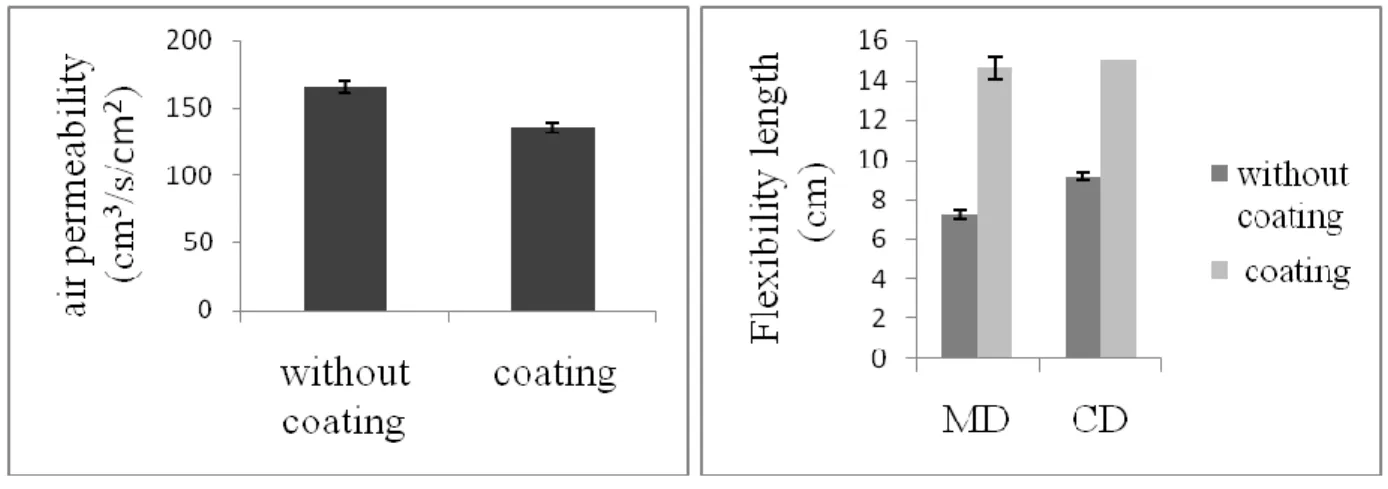Preparation and Evaulation of Degradable Poly(lactic acid) Composite
Dressings
Ching Wen Lou
1, a, Chao Tsang Lu
2, b, Shih Peng Wen
3, c, Ching Wen Lin
4, d,
Chieh Yu Chao
3, 5 e, and Jia Horng Lin
3, 5f1Institute of Biomedical Engineering and Material Science, Central Taiwan University of Science and
Technology, Taichung City 406, Taiwan, R.O.C.
2Institute of Life Sciences, Central Taiwan University of Science and Technology, Taichung 406,
Taiwan, R.O.C.
3Laboratory of Fiber Application and Manufacturing, Department of fiber and composite material,
Feng Chia University, Taichung City 407, Taiwan, R.O.C.
4Graduate Institute of Fashion Design, Ling Tung University, Taichung 408 Taiwan, R.O.C. 5School of Chinese medicine, China Medical University, Taichung, Taiwan, R.O.C. aemail:cwlou@ctust.edu.tw, bemail:ctlu@ctust.edu.tw, cemail:waz770207@hotmail.com, demail:chingwen@teamail.ltu.edu.tw, eemail:cheyu68@hotmail.com, femail:jhlin@fcu.edu.tw
*Corresponding author email: jhlin@fcu.edu.tw
Keywords: PLA, chitosan, sodium alginate
Abstract.
Chitosan and sodium alginate are two prominent biomaterials because they have some unique properties such as good biocompatible and biodegradable. In this study, sodium alginate was as swelling and moisture retention layer; Chitosan was antibacterial layer.Polylactic acid (PLA) blended in different weight ratios with low melting point polylactic acid (LMPLA) to fabricate nonwoven fabric which reinforced by needle punching and hot pressing. Afterward, chitosan/ sodium alginate compound solution were treated by UV light in order to form cross-linking. Then chitosan/ sodium alginate compound solution coated on the PLA nonwoven fabric to make PLA composite dressings. The mechanical properties of chitosan/ sodium alginate membrane and dressing were measured. The optimum parameters of chitosan/sodium alginate composite membrane was treated by UV light for five minutes and the volume ratio of chitosan (3 wt %) and sodium alginate (1 wt %) solution was 8:2. After we coated chitosan/sodium alginate solution on PLA nonwoven fabric, the Tensile strength, and tear strength were upgraded by 80 % and 98 %; its air permeability and flexibility length, however, dropped by 18 % and 60 %, respectively.
Introduction
Chitosan is the deacetylated chitin whose acetyl is turned into amino. Chitosan, also known as beta-poly-D-glucosamine, is found in re-processed in arthropod’s exoskeletons and crab shells. Chitosan has properties of hemostasis and human body can absorb; therefore, it is widely applied as hemostasis materials, absorbable surgical sutures and artificial skins [1].
Sodium alginate has properties for nontoxic, biodegradable, biocompatible and low adhesion. It is usually used as drug carriers, scaffolds and dressings [2]. Polylactic acid (PLA) is popular in biomedical field due to its biocompatibility and absorbability.
Materials and Methods
In this study, all the solutions used deionized water. The 1% acetic acid water solution was prepared by 99~100% acetic acid (Nihon Shiyaku Industries, Ltd., Japan). The 1 wt % and 2 wt % sodium alginate(First Chemical Works, Taiwan) solutions were also prepared by deionized water.The 3 wt % chitosan solution was prepared by blending the 1 % acetic acid solution with chitosan powders which
Advanced Materials Research Vols. 123-125 (2010) pp 177-180 © (2010) Trans Tech Publications, Switzerland
doi:10.4028/www.scientific.net/AMR.123-125.177
All rights reserved. No part of contents of this paper may be reproduced or transmitted in any form or by any means without the written permission of the publisher: Trans Tech Publications Ltd, Switzerland, www.ttp.net. (ID: 140.134.68.89-25/07/10,09:13:29)
were the 85 % deacetylation Chitin (Quan-quio Bio-technology Company, Taiwan). Chitosan solutions and sodium alginate solutions were stirred in room temperature for 24 hours,respectively. After 24 hours, Chitosan/sodium alginate were blended in different volume in ratios as followed: 10/0, 8/2, 6/4, 4/6, and 2/8. Each of the solution was later put in the UV light to cross-linked for 0, 5, 10, or 15 minutes respectively. Afterward the solutions were dried for 24 hours and become the films. The fabric was uesd nonwoven. The nowoven was prepared by PLA blending LMPLA in different weghit in ratios as followed :10 %, 20 %, 30 %, 40 %, 50 %, afterward prepared by hot press (130 ℃) to make the PLA fabric.Test its stretch strength (Standard CNS 12915), tearing strength (ASTM D4533), air permeability (ASTM D737) and bending length (Standard CNS 12915).
The film was coated on the PLA fabric to prepare the dressing, and test its stretch strength (Standard CNS 12915), tearing strength (ASTM D4533), air permeability (ASTM D737) and bending length (Standard CNS 12915).
Moisture Retention Test: The 1g film was immersed in the beaker for an hour and weighing. Ws = ( Wt – W0 ) / W0 (1) Wt: the film’s weight after being immersed in the solution, W0: the film’s original weight
Contact Angle Test: the film was placed in the machine to test its water contact angle.
result
Fig.1 and Fig.2 shows the fabric hot press for machine direction (MD) and cross- machine direction (CD). To explain LMPLA fiber structure, internal is PLA, and LMPLA is around the internal PLA. Through the hot press, LMPLA fiber become melt, the melt will sticky on the fiber and fiber cross place, result of fabric tension strength and tearing strength increase. CD’s strength is more than MD’s strength, due to the CD is the fiber direction of fabric. Hot press fabric make LMPLA melt, when the ratio of LMPLA increase, the melt quantity will increase in the fiber and fiber cross place. Due to the fiber and fiber cross place structure become strong, the strength increase.
Fig. 1.Tension strength Tests of the PLA blend different LMPLA ratio in 130 ℃
Fig. 2. Tearing strength Tests of the PLA blend different LMPLA ratio in 130 ℃
Fig. 3. Air permeability Tests of the PLA blend different LMPLA ratio in 130 ℃
Fig. 4. Flexibility length Tests of the PLA blend different LMPLA ratio in 130 ℃
Fig.3 shows air permeability rise when increase LMPLA ratio, due to increase LMPLA ratio make the melt quantity increase, the fiber become thin, the air can process more.
Fig.4 shows flexibility length of fabric, the length means the fabric can bend extent. Shorter is easy to bend. When the LMPLA ratio increase, the melt quantity increases make the fabric structure strength raise, and CD is fiber direction in the fabric that structure strength morn than MD. Result of flexibility length raise.
Fig.5 shows the moisture retention of the chitosan / sodium alginate film, without the UV light, there was no significant difference. After being exposed to the UV light for 5 minutes, the chitosan and sodium alginate was cross-linked, due to the hydrophilic group reduce, moisture retention was decrease. Exposed to the UV light for 10 and 15 minutes, the moisture retention ratio was raise. Due to there are more bond breakings, the hydrophilic group increase draw more water. Too much UV light leads to more bond breakings such as carbonyl, hydroxide and hydrogenperoxide [3] which draw in more water.
Fig.6 shows the water contact angle tests of the chitosan / sodium alginate films. When chitosan ratio increase the angle is decrease. Due to sodium alginate is more hydrophilic than chitosan. Exposed to the UV light 5 minutes made angle little decrease, due to chitosan and sodium alginate cross-linked, the hydrophilic group reduce[4,5].
Fig. 5. Moisture retentions Tests of the 3 % Chitosan / 1 % Sodium alginate film
Fig. 6. Water Contact Angle Tests of the 3 % Chitosan / 1 % Sodium alginate film
Fig. 7. Tension strength Tests of the PLA blend 20 % LMPLA in 130 ℃
Fig. 8. Tearing strength Tests of the PLA blend 20 % LMPLA in 130 ℃
The optimum conditions was the PLA blend 20 % LMPLA by hot pressing in 130℃. Fig.7 to fig.10 indicate the dressing’s mechanical properties coating and without coating chitosan / sodium alginate films. Fig.7 and fig.8 suggest that the chitosan / sodium alginate coated PLA fabric’s stretch strength and tearing strength are higher. The polymer solution reinforcement the fabric’s structure, so the dressing’s tearing strength and stretch strength were improved. Fig.9 shows that the film-coated dressing’s air permeability decreases. The dressing’s holes in the structure become too narrowed to allow the air in. Fig.10 indicates the bending length is declined. When the solution was dried, it became a film on the fabric, and this fabric become composite dressings. This process reinforcement the dressing’s structure; thus, the bending length decreases.
Summary
The optimum conditions of fabric is PLA blend 20 % LMPLA by hot press in 130 ℃ (CD). UV light 5 minutes has the best cross-linked time of chitosan and sodium alginate.
The optimum conditions of film is 3 % chitosan / 1 % sodium alginate (8/2) at UV light 5 minutes. After coating and dries, the fabric become dressing. Coating solution on fabric was reinforcement the fabric’s structure, thus the tension strength and the tearing strength were upgraded by 80% and 98%; its air permeability and flexibility length, however, dropped by 18 % and 60 %, respectively.
References
[1] Thomas Freier, Hui ShanKoh, Karineh Kazaian, Molly S. Shoichet:Biomaterials 26 (2005), p.5872-5878.
[2] Hui Ling Lai, Asad’ Khalil, Duncan Q.M. Craig:International Journal of Pharmaceutics 251 (2003), p.175-181.
[3] A.Sionkowska , H.Kaczmarek , M.Wisniewski , J.Skopinska , S.Lazare , V.Tokarev:Surface Science 600 (2006), p.3775-3779.
[4] M. Yakup Arıca, Meltem Yılmaz, Emine Yalçın, Gülay Bayramoglu:Journal of Membrane Science 240 (2004), p.167–178.
[5] Guoqi Shi, Yuanwei Chen, Changxiu Wan, Xixun Yu, Ting Feng, Yulong Ding:Applied Surface Science 255 (2008), p.422–425.
Fig. 10. Flexibility length Tests of the PLA blend 20 % LMPLA in 130 ℃
Fig.9. Air permeability Tests of the PLA blend 20 % LMPLA in 130 ℃


